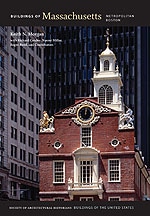Trinity Church incorporates a fine Gothic Revival chapel designed by local architect John H. Chapman and a new sanctuary added by Pietro Belluschi, internationally recognized as a leading modern architect, while he was dean of the MIT School of Architecture. Chapman constructed a steep-roofed granite, fieldstone, and brick church with transept and side entrance. Local architect Harry B. Little extended the nave in 1941. Continuing to grow
You are here
Trinity Church
1884, John H. Chapman; 1913; 1941, Harry B. Little; 1948, Frank Sewall Owen; 1959–1963, Pietro Belluschi. 67–81 Elm St.
If SAH Archipedia has been useful to you, please consider supporting it.
SAH Archipedia tells the story of the United States through its buildings, landscapes, and cities. This freely available resource empowers the public with authoritative knowledge that deepens their understanding and appreciation of the built environment. But the Society of Architectural Historians, which created SAH Archipedia with University of Virginia Press, needs your support to maintain the high-caliber research, writing, photography, cartography, editing, design, and programming that make SAH Archipedia a trusted online resource available to all who value the history of place, heritage tourism, and learning.















